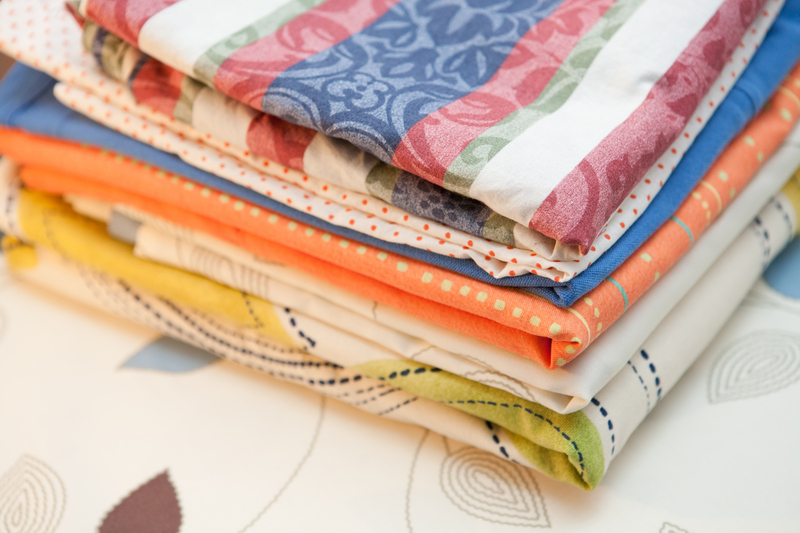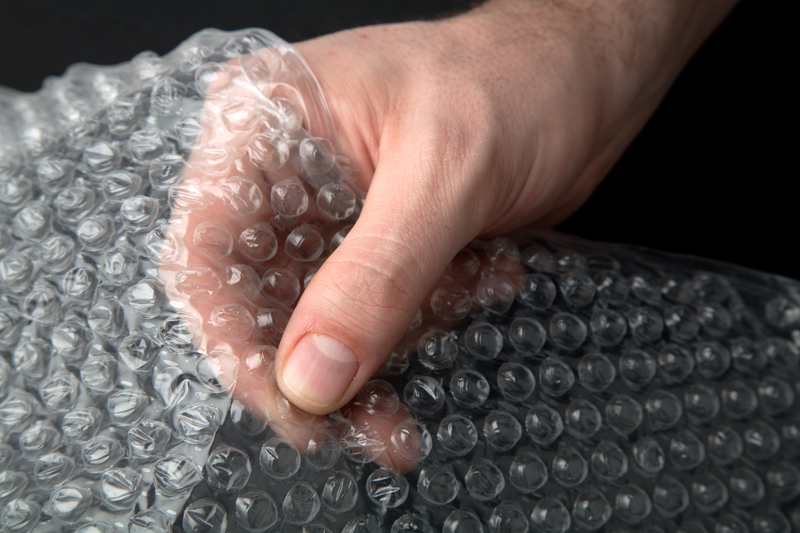Keep Your Sofa Looking New with Long-Term Storage Advice
Posted on 18/05/2025
Keep Your Sofa Looking New with Long-Term Storage Advice
Is your living room about to undergo some changes, or are you in need of extra space for a while? Keeping your sofa fresh and pristine during long-term storage is a significant concern for many homeowners.
If you want to keep your sofa looking new, it's crucial to plan your storage process carefully. From cleaning to choosing the right environment, using appropriate covers, and regular inspections, there are specific steps to ensure your beloved furniture remains in perfect condition.
In this comprehensive, SEO-optimized guide, you'll discover a wealth of long-term storage advice for your sofa.

Why Is Proper Sofa Storage Important?
Your sofa is often the centerpiece of your home's living space--a comfortable haven and an aesthetic statement. Without proper storage techniques, your treasured sofa could face:
- Mildew and mold from damp environments
- Stains or odors from improper coverage
- Structural warping from poor positioning
- Infestation by pests
- Fading or cracking from direct sunlight or temperature extremes
Learning how to correctly store your sofa long-term not only preserves its appearance but also extends its lifespan, saving you money and hassle in the future.
Pre-Storage Sofa Care: The Essential Steps
1. Thoroughly Clean Your Sofa
The first and perhaps most vital step in preparing your sofa for storage is a meticulous cleaning routine. Storing a dirty sofa can cause permanent stains, attract pests, and trap unpleasant smells. Follow these cleaning tips to begin:
-
Vacuum All Surfaces
- Use an upholstery attachment to reach crevices and remove dust, food crumbs, and pet hair.
-
Spot Clean Stains
- Use a gentle fabric cleaner. Always follow the manufacturer's instructions for fabric type, whether it's leather, microfiber, or fabric.
- For leather sofas, choose a leather-specific cleaner and conditioner.
-
Deodorize
- Sprinkle baking soda on fabric sofas, let sit for 20 minutes, then vacuum for freshness.
- Allow surfaces to dry completely before proceeding.
2. Disassemble or Detach Loose Parts
Whenever possible, detach:
- Removable cushions
- Feet or legs
- Modular sections
This minimizes the risk of stress on joints, facilitates packing, and makes moving your sofa easier and safer.
3. Protect and Wrap Your Sofa Properly
Wrapping is essential to keep your couch in new condition during storage. Avoid plastic wraps for long periods (as they can trap moisture), and instead opt for breathable materials. Here's what to use:
- Cotton drop cloths or moving blankets for breathability and dust protection
- High-quality furniture covers designed for your sofa's shape and size
- Bubble wrap for delicate or decorative legs--never directly on fabric or leather
- Secure covers with straps or bungee cords--but not so tightly as to cause indentation
Choosing the Right Storage Environment
1. Opt for Climate-Controlled Storage
One of the most effective ways to keep your sofa looking new in storage is choosing a climate-controlled storage unit. Extreme temperatures and humidity can:
- Warp wood or deform foam padding
- Encourage mold and mildew growth
- Crack or fade upholstery, especially leather
Climate-controlled units maintain stable temperature and moisture levels year-round, making them indispensable for high-value or sentimental pieces.
2. Store Off the Ground
Another often-forgotten tip in sofa storage best practices is elevating your furniture. Use:
- Wooden pallets
- Bricks or blocks
- Foam pads
This prevents moisture accumulation from concrete floors, deters pests, and allows air to circulate under the sofa.
3. Safe Placement in the Storage Unit
Never store heavy boxes on top of your sofa, as this can:
- Sag or warp cushions
- Crack or deform frames and springs
Place your sofa in a way that weight is evenly distributed and nothing presses against delicate parts.
Best Practices for Long-Term Sofa Storage
1. Inspect and Check Regularly
Long-term storage doesn't mean you can forget about your possessions. Every few months, if possible, inspect your stored sofa. Look for:
- Signs of moisture or mold
- New odors
- Pest activity
- Warping or excessive dust
Early detection allows for swift remedy, greatly increasing your chances of keeping your sofa in like-new condition until you need it again.
2. Avoid Direct Sunlight
UV rays can fade and damage upholstery. Position your sofa in a shaded area of the storage unit and use opaque covers to block light for maximum protection.
3. Add Silica Gel Packs or Moisture Absorbers
Moisture is the number one enemy when storing sofas. Placing moisture absorber packs or silica gel can help maintain a dry environment within covers and in the storage unit. Remember to replace these every few months.
4. Avoid Over-Tight Packing
Your sofa needs a little space to breathe. Don't cram items too tightly against or on top of it. This precaution:
- Prevents indentations and pressure marks
- Reduces risk of unseen mildew growth
5. Use the Right Sofa Cover for Long-Term Storage
- Breathable Covers: Ensure air circulation and prevent condensation.
- Custom-Fit Covers: Offer tailored protection against dust and debris.
- UV-Resistant Covers: Best for units with occasional light exposure.
Invest in a high-quality, durable cover designed for furniture longevity.
Special Care Instructions by Sofa Type
Fabric Sofas
- Ensure complete dryness of all fabric before storing to avoid mildew.
- Vacuum cushions, seams, and crevices meticulously.
- Fabric sofas benefit the most from climate-controlled storage.
Leather Sofas
- Apply leather conditioner before wrapping to prevent drying and cracking.
- Cover with breathable materials--never plastic wrap.
- Check for signs of mold or stiffness during periodic inspections.
Sectionals and Modular Sofas
- Disassemble and store each piece separately, labeling for easy reassembly.
- Wrap individual sections to avoid fabric abrasion or frame scratches.
Professional Sofa Storage Services: When to Consider Them
While DIY storage is suitable for many, you might want to consider a professional furniture storage service if you:
- Own valuable or antique sofas
- Lack a suitable storage environment
- Want scheduled maintenance and inspections by experts
- Are storing for more than a year
Professional storage specialists have the tools and experience to keep your furniture new during long absences--often providing extra peace of mind.
Common Mistakes to Avoid When Storing Sofas Long-Term
- Skipping the Cleaning: Even minor residue can become a major issue after months in storage.
- Using Plastic Wrap: Avoid plastic directly on upholstery. It suffocates the fabric and traps moisture.
- Neglecting Pest Control: Set rodent bait or deterrents as a proactive step.
- Storing on Bare Ground: Always elevate your sofa to prevent bottom moisture damage.
- Piling Heavy Items: Never stack boxes or furniture on top of your sofa.
- Ignoring Insurance: Insure valuable items for additional security during long storage periods.
Get Your Sofa Ready for Use After Storage
When it's time to bring your sofa out of storage, reverse your preparation steps:
- Remove covers and allow the sofa to air out in a dry, ventilated area
- Give it a thorough vacuum or wipe-down
- For fabric sofas, use a fabric freshener for any musty odors
- For leather, apply conditioner for suppleness and shine
- Reattach legs or feet carefully
- Check for any surprises--like insects or mold--before moving into your home

Frequently Asked Questions About Long-Term Sofa Storage
Q: How long can I store my sofa before it starts to deteriorate?
A: With proper preparation and climate control, most sofas can be stored safely for years with minimal deterioration. Regular inspections help ensure there are no unexpected issues.
Q: Is insurance necessary for stored sofas?
A: It's strongly recommended to insure valuable furniture, especially when stored outside your home, for peace of mind.
Q: Can I store my sofa in my garage?
A: Only do so if your garage is dry, climate-controlled, and secure from pests. Otherwise, consider a dedicated storage unit.
Final Thoughts--Keep Your Sofa Looking New with Smart Storage
Your sofa is an investment in your home's comfort and style. With detailed long-term storage tips, including thorough cleaning, protective wrapping, climate-control, and diligent checks, you'll keep your sofa looking as good as new for years to come.
Remember, the little things matter--from the type of wrap you choose to the way you position the sofa in your storage unit. With careful attention and the advice in this guide, your sofa will be ready to shine in your living space again, just like the day you first brought it home!
Implement these long-term sofa storage strategies now, and enjoy your fresh, inviting sofa whenever you need it next.



